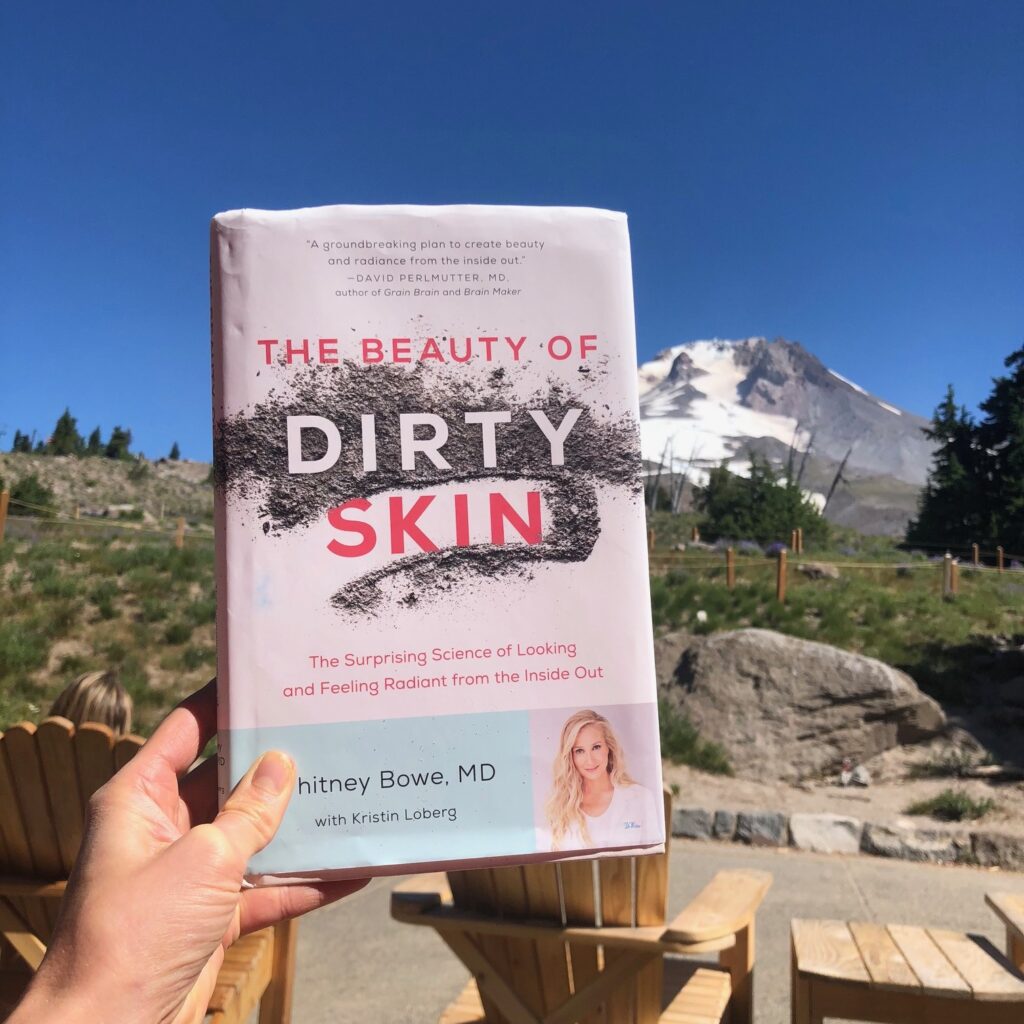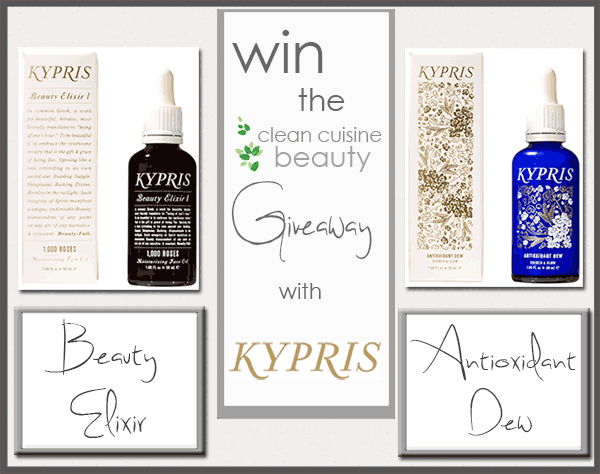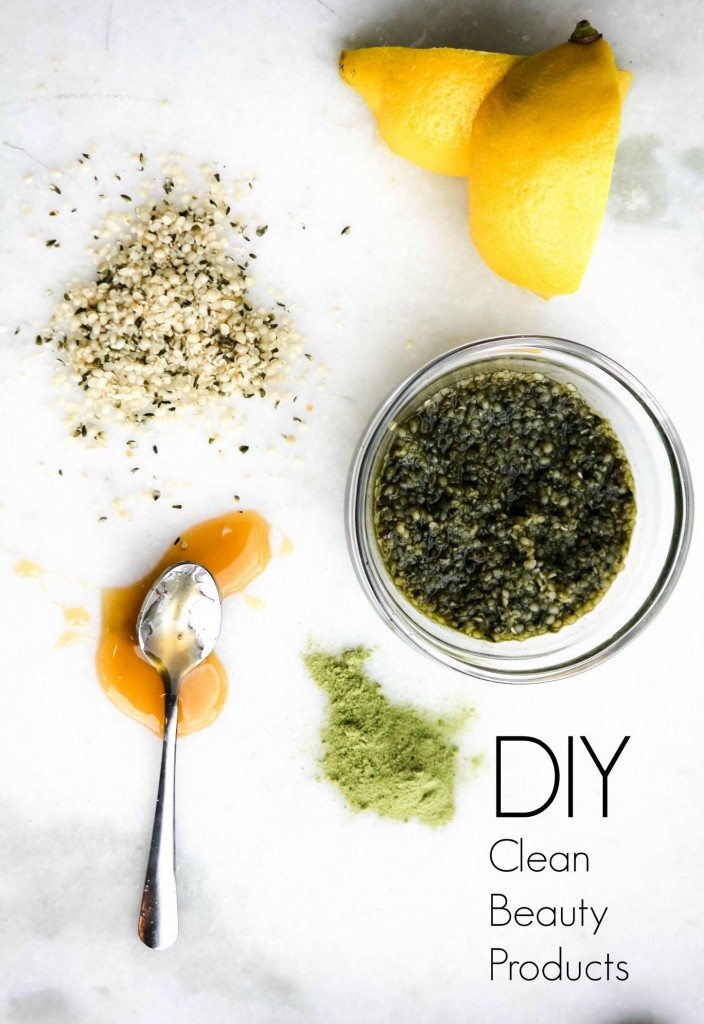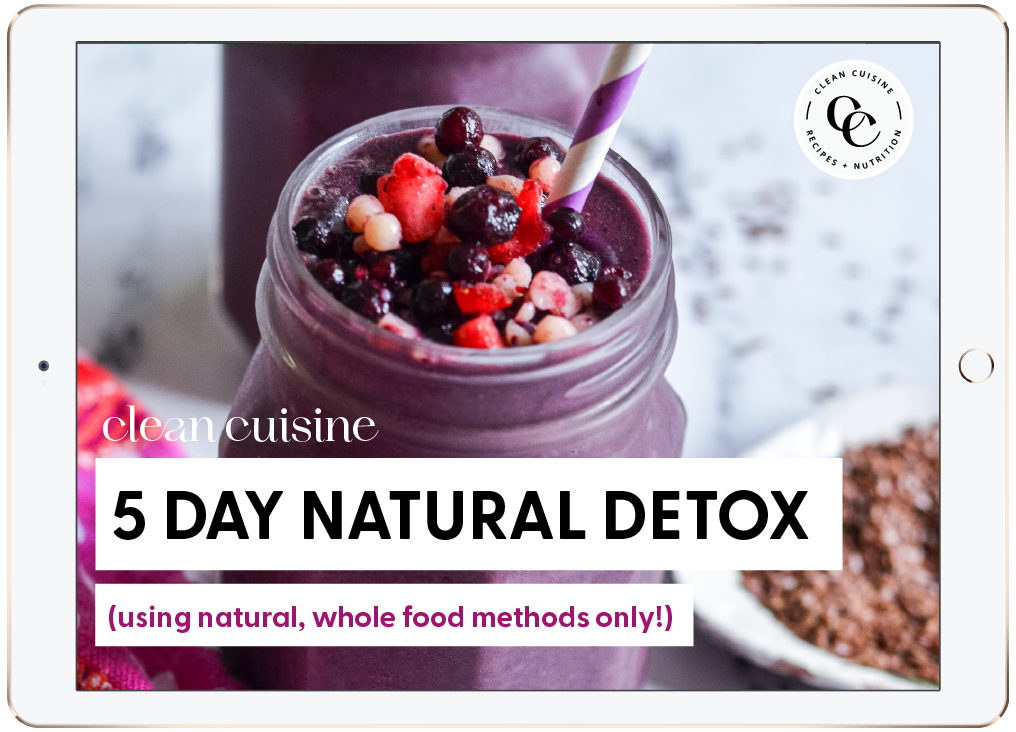 If you have even the slightest skin concern then you will want to know about Whitney Bowe, M.D., the author of The Beauty of Dirty Skin. This is NOT just about vanity by the way.
If you have even the slightest skin concern then you will want to know about Whitney Bowe, M.D., the author of The Beauty of Dirty Skin. This is NOT just about vanity by the way.
Because if your skin is inflamed, your gut is inflamed. If your gut is inflamed then chances are your whole body is on fire. And whole-body inflammation impacts far more than just your skin….
Gut-Brain-Skin Axis
If you have not yet heard of the relationship between your gut, brain and skin, you will know all about it after reading The Beauty of Dirty Skin. I learned about the connection years ago when the plant-rich (but not vegan), anti-inflammatory and clean eating diet I began following in an effort to control my symptoms of multiple sclerosis (MS) began to make a real difference in the appearance of my skin. Your gut, your brain and your skin share a very intimate relationship—they are all connected in surprising, powerful ways. In other words, if you have skin issues, then you have more to worry about than you might think.
Get to Know Dr. Whitney Bowe…
For what it’s worth, I was introduced to The Beauty of Dirty Skin book a few weeks ago after our Clean Cuisine health coach, Cherie Fromson, saw Dr. Bowe’s appearance on Good Morning America. Cherie has been helping me with my soon-to-be-released Clean Cuisine Cookbook and even though we don’t talk about how the anti-inflammatory recipes in the book can help with skin, the nutrition recommendations Dr. Bowe was making are directly in-line with our own (we discuss nutrition extensively in our last book HERE.) I have been friends with Cherie since 7th grade and now that we are both almost in our mid-forties we are definitely starting to get interested in slowing the aging process of our skin (especially since we grew up in the harsh south Florida sun!) Cherie was so enthused with what Dr. Bowe had to say on GMA that she ordered us both a copy of her book right away. It wasn’t until our recent vacation to Oregon when I finally got a chance to sit down and read it cover to cover. I’m sure glad I did!
But Who is Dr. Whitney Bowe?
The first thing I do before reading any health book is check out the credentials of the author. In this case, Dr. Whitney Bowe has some of the most impressive credentials of any physician I have seen for her age. Like my husband, Andy, Dr. Bowe studied medicine at the University of Pennsylvania, where she graduated top of her class. (FYI: University of Pennsylvania is consistently ranked among the top three medical schools in the country and graduating at the top of your class is no joke.) Now as the Medical Director of Integrative Dermatology, Aesthetics & Wellness at Advanced Dermatology, P.C., she also serves as the Clinical Assistant Professor of Dermatology at the Icahn School of Medicine at Mount Sinai Medical Center. Her research in microbiology has earned her scores of awards from renowned organizations such as the Skin Cancer Foundation. Named to the coveted Super Doctors of New York list, Dr. Bowe holds a patent for a bacterial-derived acne treatment. She has written more than 40 articles and book chapters, and has conducted clinical trials exploring new forms of treatment for acne.
And oh yes, she is absolutely beautiful to top it all off! Whatever Dr. Bowe is doing for her own luminous skin is clearly working 😉
5 Tips I Learned from “The Beauty of Dirty Skin” Book
First of all, the “good bacteria” on our skin and in our gut plays a major role in serious skin conditions (such as eczema and rosacea), but it can also slow the visible signs of aging (including fighting off wrinkles and brown spots.)
And second, you’ve got to get a little dirty to “glow”. What I mean by that is that squeaky clean skin is not exactly healthy skin. I know for those of you who grew up believing you should scrub your skin clean as a whistle this might be a bit confusing, but Dr. Bowe covers it all –in layman’s terms–in her book.
Speaking of the book, unlike a lot of health books I see released these days, The Beauty of Dirty Skin includes over 100 references to research from mainstream medical literature. And most encouraging of all, Dr. Bowe says you can start to see visible results in as little as 21 days!
Ok, so here are 5 takeaways I have learned so far from Dr. Bowe….
#1 No More Emulsifiers. In 2005, laboratory studies revealed the damaging consequence of dietary emulsifiers on the gut microbiome. What are emulsifiers? They are molecules that act as blending agents in food products that contain otherwise unmixable ingredients, such as oil and water (bottled salad dressings almost always have emulsifiers!) They also act as preservatives. (Note: Dr. Bowe says the natural emulsifiers such as egg yolks and mustard are not harmful.) Even if you think you don’t eat them, chances are great that if you eat processed foods you are also eating emulsifiers. When consumed, emulsifiers adversely change the composition of the gut’s microbiome, which in turn results in greater systemic inflammation, which contributes to skin disorders (along with many other conditions, such as MS, like I have.)
Here is a short list of emulsifier ingredients to avoid:
-carageenan
-soy lecithin
-polysorbate 80
-polyglycerols
-guar gum
-locust bean gum
-xanathan gum
#2 Toss the Diet Sodas. On page 59 of The Beauty of Dirty Skin, Dr. Bowe presents startling research showing the detrimental effects artificial sweeteners have on our gut microbiome (1, 2). Those seemingly harmless little packets of Splenda and Equal so many people use as sugar alternatives may not contain calories, but they contain chemicals that have the power to disrupt the gut’s microbiome so much that they negatively affect metabolism and disrupt blood sugar balance. That means artificially sweetened beverages (and foods) not only increase the risk of insulin resistance and diabetes (as well as obesity) but they also increase the risk of skin conditions such as acne and rosacea through a domino effect of increased inflammation. ***Note: Dr. Bowe says stevia, which is extracted from the leaves of a plant, does not have the same impact on the body as classic artificial sugars do. However, there is still some concern that even stevia can reduce the number of beneficial bacteria such as Lactobacillus reuteri, so using it sparingly is probably your best bet. Luckily, a little bit of stevia goes a very long way!***
#3 Move for 30 Minutes. We tend to think about the benefits of exercise in terms of fitness and weight control, but I doubt most people realize the very important role regular exercise plays in keeping your skin young and firm. Did you know if you exercise just 30-minutes a day it can make your skin look DECADES younger under a microscope? I had no idea. Research also shows regular exercise has been linked to improve gut health. Dr. Bowe dedicates an entire chapter in The Beauty of Dirty Skin book discussing the power of exercise (plus meditation and sleep) as it relates to skin health (we too feel exercise is so important that we have dedicated an entire chapter to it in our Clean Cuisine nutrition book). One thing I found particularly encouraging was new research Dr. Bowe presented showing that exercise can reverse skin aging in people who begin a workout regimen late in life. In other words, it is never too late to start! But how much exercise do you need to do? The good news is you don’t need to go to extremes. In fact, when it comes to exercise, over-training can potentially backfire. Instead, you want to find the “sweet spot” and do a workout that leaves you feeling energized, not depleted. If you can move for just 30 minutes a day that will do wonders for your skin and health. ***Note: Our Full Fitness Fusion 30-minute workout DVD will get your heart pumping with ZERO impact on your joints while simultaneously toning every major muscle in your body.***
#4 Go Pro! According to Dr. Bowe on page 41 of The Beauty of Dirty Skin, “Nowhere is the science of probiotics showing its powers more than in my field (dermatology). We may not, for example, be able to cure conditions such as obesity easily and quickly with probiotics (yet), but there is a staggering amount of evidence that we’ll soon have new solutions to skin challenges based in part on probiotic therapies.” I was especially surprised to learn certain strains of “good” bacteria applied in a topical probiotics serum could benefit skin health (by the way, Dr. Bowe’s own research on the the benefits of using topical probiotics to help acne was published HERE.) Certain strains of “good” bacteria can secrete natural antibiotics that benefit the skin, improve hydration, support collagen production and produce other substances that are anti-inflammatory, soothing and calming to our largest organ (our skin!) ***On her website, Dr. Bowe recommends several topical probiotic brands HERE. In addition to eating prebiotic-rich foods and naturally fermented probiotic-rich foods, you might also want to consider supplementing with oral probiotics. You want to look for a high potency probiotic supplement that contains prebiotics as well as strains of bacteria that have been clinically documented for their effectiveness (such as Lactobacillus, Bifidobacterium, and Saccharomyces.) We recommend Dr. Ohhira’s brand and Amare.***
#5 Ditch the Dairy. If you have our book, you know we are not big fans of dairy. We give 10 reasons we don’t like cow’s milk in the book but now we can add an 11th reason: research shows consuming milk and milk-based products (such as ice cream) can significantly ramp up one’s risk for acne—sometimes as much as fourfold! Interestingly, as Dr. Bowe points out in her book, the studies do not show the same results with fermented yogurt and cheese. One theory that might offer an explanation is that the fermentation process involved in creating probiotic-rich foods such as yogurt produces lower levels of IGF-1 (insulinlike growth factor) than you would find in milk. Dr. Bowe points out on page 126 of The Beauty of Dirty Skin book that although the exact reasons milk’s negative effect on skin health are not entirely known, what we do know is that two key ingredients are probably at play: the milk proteins whey and casein. She goes on to explain how whey increases insulin levels, which can impede our ability to control blood sugar and simultaneously thwart our body from reducing inflammation, and casein promotes the release of IGF-1. The relationship between IGF-1 levels and health is somewhat complicated. Excessively low or high IGF-1 levels could lead to health problems. In adults, a high IGF-1 level is linked to accelerated aging and an increased risk of cancer and premature death (3, 4, 5, 6 and 7). Whether you decide to eat a bit of cow’s cheese or yogurt is up to you, but if you have not yet switched from cow’s milk to plant milk, now might be the time (wink). ***Here are my favorite plant-based milk alternatives.***
Learn More About Dr. Bowe:
BUY The Beauty of Dirty Skin
Visit Dr. Bowe’s Website HERE







